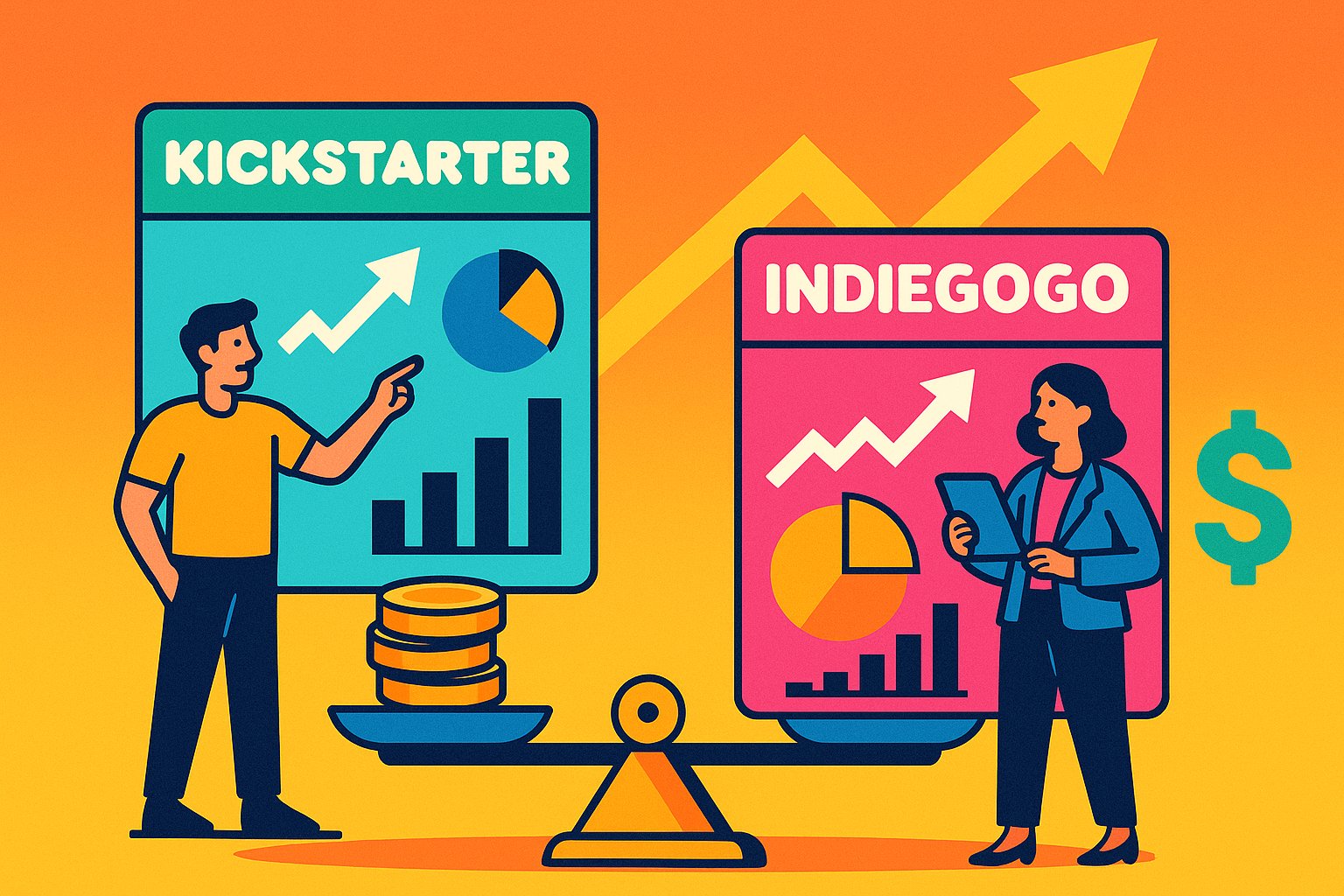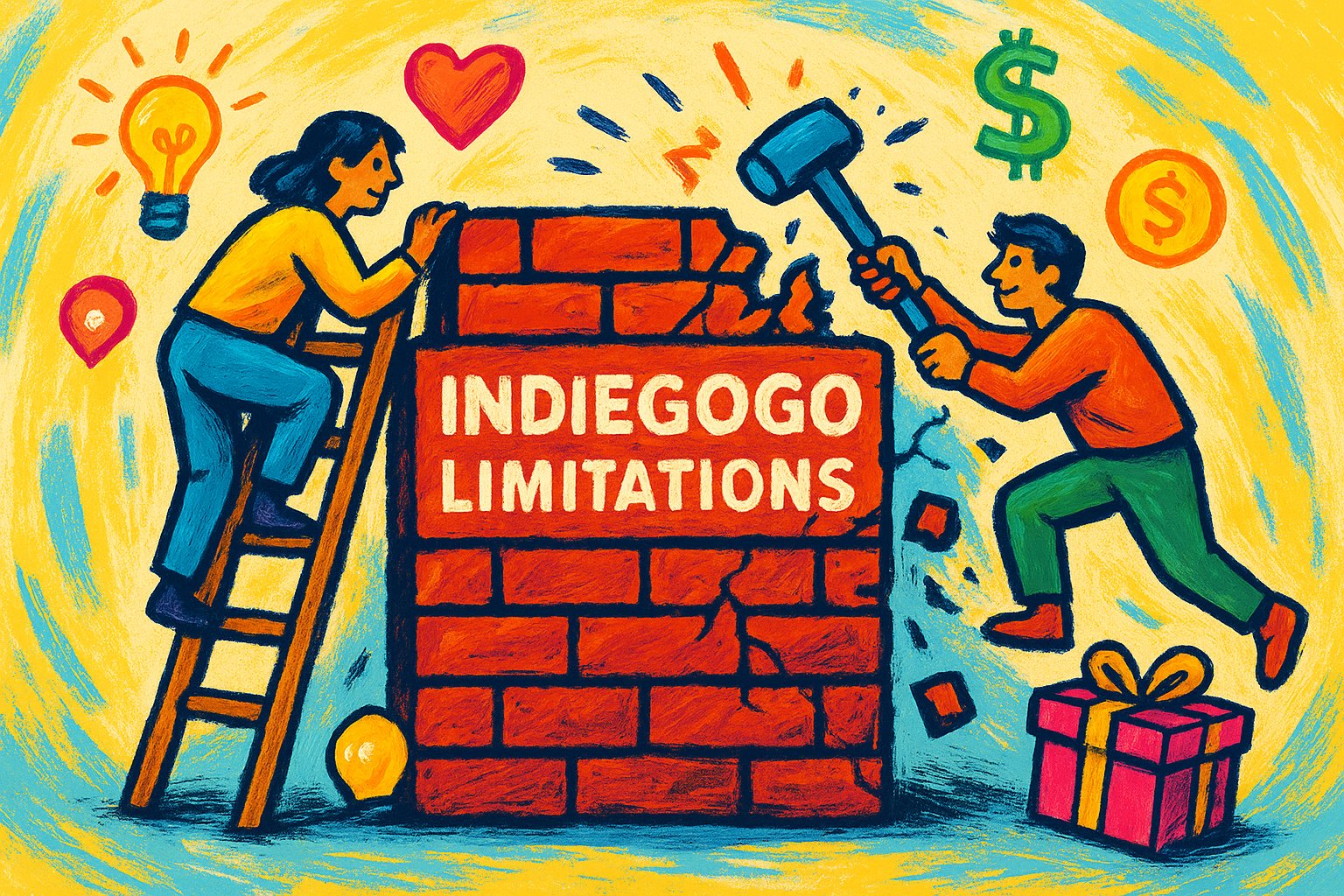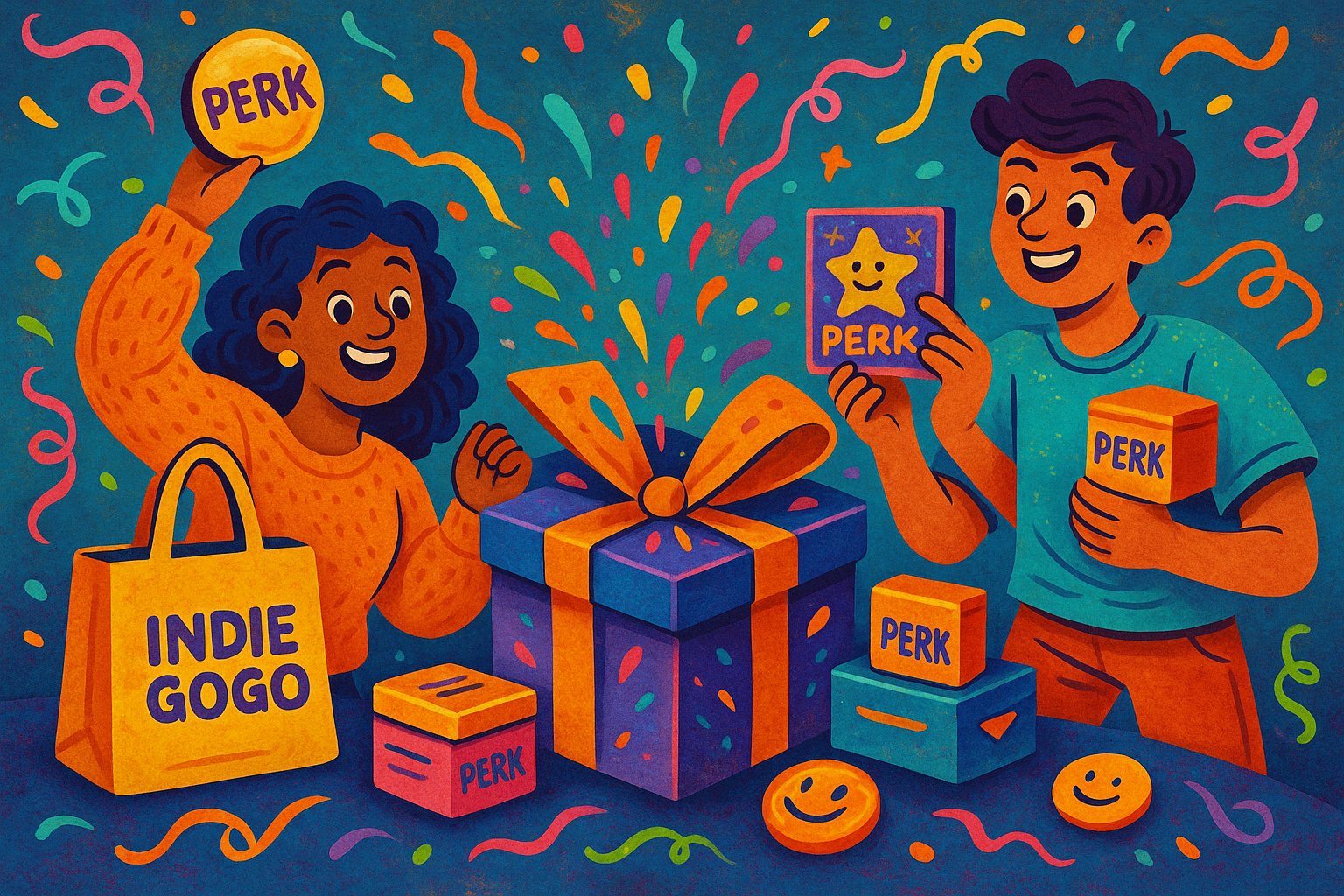Navigating Crowdfunding Platforms: Success by the Numbers
Embarking on a crowdfunding journey ignites a potent blend of creativity and ambition. You’ve honed your concept, polished your prototype, and curated your visual narrative; now, you face a pivotal decision: where to launch. Kickstarter and Indiegogo dominate the crowdfunding landscape, each boasting its own strengths, community dynamics, and success metrics. While both platforms have propelled groundbreaking projects—indie films, board games, wearable tech—their “success rates” diverge in critical ways that directly impact your campaign’s likelihood of reaching funding goals. Kickstarter’s all-or-nothing model encourages backer confidence by ensuring funds transfer only if the goal is met, whereas Indiegogo’s Flexible Funding option allows creators to keep partial funding, regardless of outcome. Data indicates that Kickstarter’s overall success rate hovers around 35%, while Indiegogo’s averages near 20% if measured solely by initial goal attainment. However, these headline figures oversimplify a far more nuanced reality. Success on either platform requires a strategic alignment of campaign mechanics, category-specific norms, pre-launch groundwork, and real-time metric analysis. In this opening section, we’ll explore why dissecting these quantitative and qualitative differences early on is indispensable. By understanding how each platform’s ecosystem—its funding models, fee structures, editorial curation, and discovery algorithms—influences backer behavior, you set the stage for a campaign that not only meets its financial targets but also builds lasting community trust.
Defining Success: Beyond Simple Goal Attainment
While the percentage of campaigns that reach their funding goals provides a convenient benchmark, a broader definition of success better reflects long-term impact. Total funds raised, average pledge per backer, repeat support in subsequent campaigns, and post-campaign sales all contribute to a project’s ultimate viability. A Kickstarter campaign that hits its modest $20,000 goal but fails to deliver on time may damage brand reputation, whereas a campaign that raises 90% of its goal but garners significant press coverage and investor interest can yield lasting dividends. Similarly, Indiegogo’s Flexible Funding model allows creators to keep partial funding—validating market demand—even if they fall short of their initial target. Post-campaign InDemand sales on Indiegogo can further bolster revenue by converting residual interest into pre-orders; top InDemand campaigns often generate an additional 20–30% of their funding through this channel. Category-specific norms also shape expectations: on Kickstarter, creative arts and tabletop games enjoy success rates near 40–50% because backers perceive lower risk, whereas technology hardware projects, which require higher production budgets, hover around a 25% success rate. By expanding our view of success to include community engagement, post-campaign traction, and brand-building metrics, creators can select the platform that aligns best with their long-term objectives, rather than simply chasing the highest “percentage funded” figure.
Kickstarter’s All-or-Nothing Model: Igniting Momentum
Kickstarter’s foundational “all-or-nothing” approach creates a psychological imperative: backers know their cards are drawn only if the campaign meets its target by the deadline. This reduces perceived risk and fosters a sense of collective urgency—pledges directly contribute to crossing the finish line. Data shows that campaigns achieving 30% of their goal within the first week boast roughly an 80% likelihood of ultimate funding, thanks in part to algorithmic amplification and editorial curation. Kickstarter’s “Projects We Love” feature and category-specific newsletters spotlight select campaigns, driving waves of new backers and reinforcing social proof. Optimal campaign duration on Kickstarter is typically 30 days—long enough to build momentum but short enough to prevent backer fatigue. Tabletop gaming campaigns, for instance, often hit 50% funding in the first three days, driven by enthusiastic niche communities that pledge between $20 and $50 for early-edition rewards. Creative arts projects—comics, short films, and album launches—relish similar dynamics: emotional storytelling and collectible perks entice backers who value artistic expression. Hardware and tech campaigns face steeper challenges: requiring six-figure budgets for tooling, manufacturing, and compliance, these projects must demonstrate prototype viability and risk mitigation early to retain backer confidence. By engineering a robust pre-launch strategy—cultivating an engaged email list of at least 1,000 prospects, securing influencer endorsements, and offering limited “founder” tiers—creators set the stage for a rapid funding spike that propels the campaign toward success.
Indiegogo’s Flexible Funding and InDemand: Sustaining Traction
Indiegogo’s distinctive edge lies in its flexibility. In addition to Fixed Funding (mirroring Kickstarter’s all-or-nothing), Indiegogo offers Flexible Funding, allowing creators to retain any amount pledged, regardless of whether they meet their goal. This model attracts early-stage innovators and niche hardware builders who require seed capital to refine prototypes or validate market demand. While Flexible Funding’s average success rate—defined by reaching initial goals—hovers around 15–20%, creators can mitigate risk by setting realistic stretch targets and leveraging partial funding to continue development. Crucially, campaigns that underperform can transition directly into InDemand, Indiegogo’s post-campaign marketplace. Through InDemand, creators can accept pre-orders indefinitely, converting residual interest into tangible sales. InDemand’s conversion metrics often exceed 40% of page views, adding a significant revenue stream that extends well beyond the original campaign window. For technology and innovation projects—such as wearable health devices, eco-friendly solutions, or early-stage robotics—Indiegogo’s ecosystem provides an invaluable runway. Clear MVP roadmaps, working prototype demos, and transparent production timelines reassure backers, prompting incremental pledges that accumulate into meaningful funding. Unlike Kickstarter, where missing the goal yields zero funds, Indiegogo’s Flexible Funding ensures that creators still receive capital to invest in tooling, testing, or marketing, even if they do not hit their original targets. By harnessing InDemand effectively—integrating with Shopify or Google Shopping, optimizing product pages, and running targeted retargeting ads—creators sustain momentum and cultivate brand loyalty, turning initial backers into repeat purchasers.
Category Insights and Backer Demographics: Who Pledges Where?
Crowdfunding outcomes vary significantly by category and backer demographics, shaping platform-specific success patterns. On Kickstarter, creative arts, tabletop gaming, and design projects often achieve success rates of 40–50%. Tabletop games, for example, attract deeply engaged communities who pledge between $20 and $50 for early access, expansions, and exclusive elements. Design-focused campaigns—ranging from innovative furniture pieces to artisanal textiles—also thrive, as backers appreciate the tangible aesthetic value and low perceived risk. By contrast, hardware and technology campaigns face steeper hurdles: requiring six-figure budgets for prototyping, manufacturing, and regulatory compliance, these projects average a 25% success rate. Backers in these niches demand proof-of-concept prototypes, detailed BOMs (Bills of Materials), and comprehensive risk mitigation plans. Indiegogo’s demographic landscape, while overlapping with Kickstarter’s, exhibits distinct patterns. Approximately 50–60% of Indiegogo pledges come from the United States, with Europe (UK, Germany, France) and emerging Asian markets (Japan, South Korea, parts of Southeast Asia) contributing sizable shares. Tech-savvy early adopters on Indiegogo typically pledge in smaller increments—$10–$25—testing MVP concepts before upgrading to higher tiers. Indiegogo’s tech and innovation categories boast roughly 15–20% goal attainment rates, but they offset lower initial success by leveraging InDemand’s post-campaign sales, which can generate an additional 20–30% of total project revenue. Niche segments—eco-friendly products, AI-enabled wearables, and sustainable consumer goods—often see average pledge values 20–30% higher than generic electronics, reflecting backer willingness to invest in impactful innovation. By analyzing these category-specific metrics and demographic behaviors, creators can tailor their campaign positioning—emphasizing narrative and communal experience on Kickstarter, or technical credibility and global reach on Indiegogo—to resonate deeply with targeted backer personas.
Reward-Tier Architecture and Pre-Launch Preparation
Reward tiers serve as the linchpin of campaign economics, balancing perceived value with net profitability after fees. On Kickstarter, effective tier architecture begins with a $5–$10 “supporter” tier offering digital recognition or early backer status. Mid-range tiers—$25–$50—provide core product items or limited-edition variants; data from successful tabletop campaigns shows these tiers often capture 40–50% of pledges. High-value tiers—$100 and above—bundle multiple items, exclusive merchandise, or “lifetime” perks, promoting larger pledges from super-backers. Stretch-goal planning further elevates engagement: once 50% of funding is secured, announcing a bonus item (e.g., a custom art print or accessory) for mid-range backers can shift existing pledges upward. Indiegogo’s reward architecture must align with Flexible Funding imperatives. Early adopters frequently pledge $10–$25 for prototype access, requiring an MVP or functional demo to instill confidence. Mid-range tiers—$50–$100—feature polished prototypes or bundled sets, encouraging backers to upgrade as development matures. Indiegogo’s global audience demands region-specific tiers that transparently cover shipping: a European tier priced in euros, a North American tier in dollars, and an Asia-Pacific tier in local currencies to avoid unpleasant surprises at checkout. Add-on accessories—replacement parts, premium cases, or digital extras—boost average order values, particularly during InDemand, when initial backers return for supplementary items. Regardless of platform, reward pricing must account for a 5% platform fee and roughly 3% payment processing fee (plus a fixed fee per transaction). Creators should embed a 10–15% buffer into pricing to preserve margins after fees and shipping. Transparent communication—explaining that a $50 tier nets $44 after fees—builds trust and preempts backer frustration.
Pre-launch preparation underpins campaign success. Both platforms demand rigorous groundwork: cultivating an email list of at least 1,000 targeted contacts, forging influencer partnerships, and securing press coverage. On Kickstarter, advanced editorial pitches—highlighting prototypes, high-resolution images, and narrative-driven campaign decks—can earn “Projects We Love” curation, doubling pledge velocity within 48 hours of launch. Live pre-launch events—webinars, AMA sessions, or demos at trade shows—generate buzz and gather feedback that refines campaign messaging. Indiegogo campaigns focus additional effort on demonstrating MVP viability: closed beta programs, prototype testing, and transparent roadmap disclosures reassure early adopters. Partnerships with tech blogs, niche forums, and startup accelerators yield press coverage and mentorship opportunities. By synchronizing multi-channel pre-launch tactics—email outreach, social media teasers, influencer testimonials, and prototype showcases—creators maximize first-week pledge velocity, establishing the momentum necessary to trigger platform-specific discovery algorithms and sustain long-term engagement.
Campaign Execution and Post-Campaign Momentum
Once your campaign goes live, real-time metric monitoring and adaptive strategies become paramount. Kickstarter and Indiegogo dashboards provide insights into pledge velocity, referral sources, geographic distribution, and reward-tier performance. Pledge velocity—tracked hourly and daily—reveals momentum surges or plateaus, signaling the need for timely interventions. For instance, securing 25–30% of funding in the first 48 hours on Kickstarter often unlocks algorithmic amplification and editorial features, spurring a cascade of new backers. Conversely, if daily pledges dip below 2–3% of the goal during week two, creators must swiftly refine reward descriptions, launch limited-time stretch goals, or secure fresh press mentions. Referral analytics unveil high-conversion channels: if email newsletters produce a 10% conversion rate but social ads only 2%, reallocating ad spend to newsletters increases ROI. Geographic distribution metrics prompt localized tactics: a spike in European backers may warrant translating updates into German or French, while heightened Asian engagement suggests posting on WeChat or LINE at optimal local times. Reward-tier data highlights “sweet spots”: if 50% of backers select the $50 tier, emphasizing its exclusive benefits in subsequent updates can amplify pledges. Monitoring backer comments and questions allows creators to address concerns—clarifying shipping timelines, showcasing prototype videos, or detailing stretch-goal mechanics—in real time.
Post-campaign momentum is critical for sustained success. On Indiegogo, InDemand transforms a concluded campaign into an ongoing revenue channel. Creators optimize InDemand pages with updated product imagery, customer testimonials, and streamlined checkout experiences tailored for global shipping. Retargeting ads that emphasize “limited stock” or “exclusive InDemand pricing” leverage FOMO, driving conversions. Integration with Shopify or Google Shopping broadens reach, converting casual browsers into buyers. Key InDemand metrics—conversion rates above 5%, average order value, and inventory turnover—inform production planning and feature iterations. For Kickstarter, sustaining momentum involves transitioning to direct-to-consumer channels. Backers’ emails—collected via post-campaign surveys—fuel branded online stores or partnerships with niche retailers. Periodic newsletters, spotlighting manufacturing milestones, shipping updates, and upcoming product expansions, keep the community engaged. Cross-promotional tactics—offering Kickstarter backers exclusive discount codes or early access to new lines—culminate in repeat business and brand advocacy. Tracking post-campaign metrics—such as repeat purchase rates, newsletter open and click-through rates, and referral-driven sales—provides invaluable insights into long-term brand resonance. Transparent communication—chronicling production challenges, shipping delays, and feature improvements—reinforces backer trust. By nurturing a robust post-launch ecosystem, creators transform one-time pledges into enduring brand loyalty, laying the groundwork for future projects and sustainable growth.




